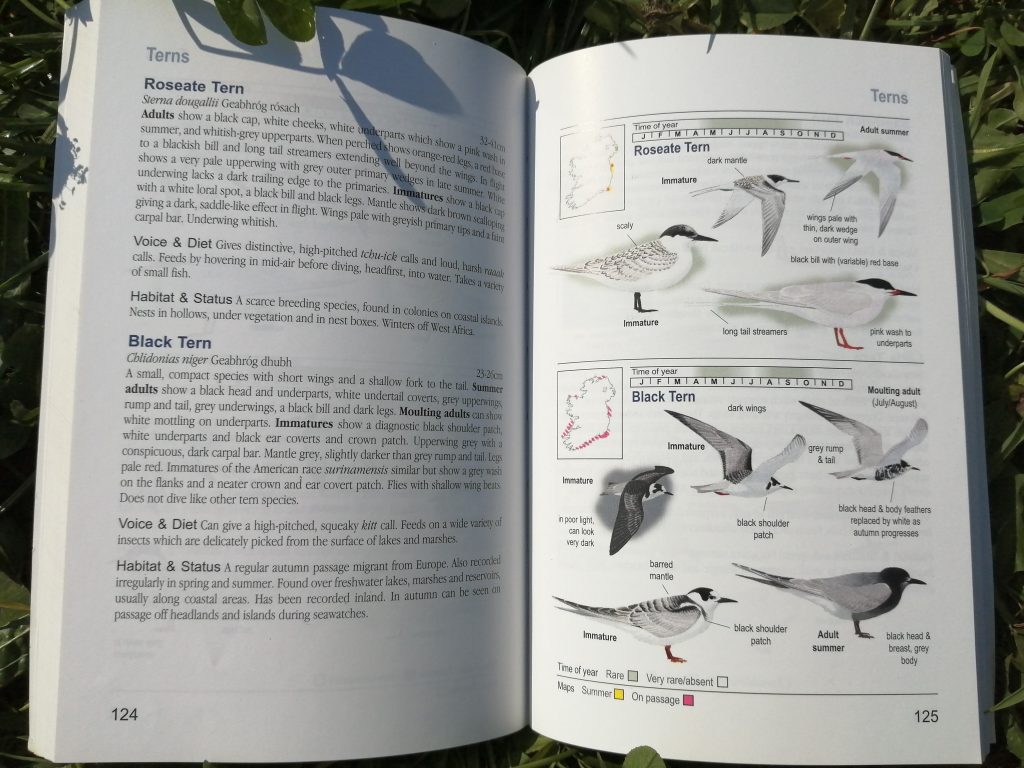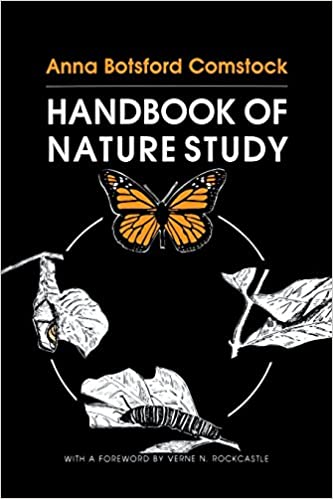Guest Post: Nature Study – How Can I Teach What I Don’t Know?

Irish nature lover and home educator Maireen has written a lovely post answering the question “How can I teach what I don’t know?” when thinking about studying nature.

I have been chatting recently to a friend about homeschooling and nature study. She said she and her husband had been looking at my Instagram feed and he spotted the post on silk button galls and wondered how I know so much stuff about so many topics.
She turned to him and said, you know she uses an app for that? What?!? She said she could hear me tumble off the pedestal in his head. I laughed, I know very little – I have just figured out where to look this stuff up. Anyone can do it – you don’t need to be an expert.
I fell in love with Charlotte Mason and her philosophy just as we were entering the early years –
“In this time of extraordinary pressure, educational and social, perhaps a mother’s first duty to her children is to secure for them a quiet growing time, a full six years of passive receptive life, the waking part of it spent for the most part out in the fresh air.” (Home Education, page 43)
Read alouds of great living books, time outside in nature, helping them to develop independent play – what was not to love? My problem was that during our time outside, I didn’t know what I was looking at. I grew up in the West Indies. The plants and animals I knew were totally different to what I now spotted around me. Even the vistas were strange. Mountains and forests looked and smelled different. I remember my first trip to an Irish beach. Where was the sand and palm trees? What was this expanse of stony ground and grey water? Even working as an architect in Ireland, I was amazed at how different the large lime trees (Tilia Cordata) which we commonly used as street trees were to the little thorny tropical fruit bushes (Citrus × aurantiifolia) of the same name. And blackbirds weren’t songbirds – they were vicious raucous birds who would take the eye out of your head as quick as look at you. I was going to need some help.
I stumbled across Lynn Seddon of Raising Little Shoots who has created Exploring Nature with Children. It’s a wonderful, gentle, Charlotte Mason inspired nature study. Each week has a theme and Lynn does a brief intro to what the theme is, what you can look for on your nature walks, suggestions for activities, poems and books. It also provides references for Anna Botsford Comstock’s Handbook of Nature Study which is described as the bible of nature study and the next book purchase I intend to make. (available free, Black & White on Amazon UK, Book Depo, Colour Birds Amazon UK, Book Depo, Colour Invertebrates Amazon UK, Book Depo, Not in the library – perhaps request your local library to purchase it?) What I love about Lynn’s curriculum is that it gives me a heads up of what I can or should be keeping an eye out for on our walks. There is no point looking for frogspawn in July or seeds in February. But I needed more localised help – things that would help me recognise what I was looking at or at least give me a ballpark idea so that I could narrow my field of searching when I got back home.
I began by learning about trees. I admit that I did have a secret weapon with my husband who trained as an arborist. He acts as my walking encyclopaedia on all things tree related. The girls and I still bring home random leaves or cones to test him. If you haven’t got a personal arborist to pester with questions then I would recommend the Collins Tree Guide (Paperback Amazon UK, Book Depo, Hardcover Amazon UK, Book Depo, library). It is wonderfully detailed with great illustrations of not just overall form of trees but also leaves, seeds, flowers and bark. It is a bit of a weight though for carrying around on a nature walk.

The National Biodiversity Data Centre do a lovely swatch which is much more portable.

Another wonderful way to get to know trees is a recommendation from Charlotte herself. Find a tree and study it all year – visit it every so often and note what you see. I learnt that ash trees are easily identified in winter due to their black buds and beech by their bud scales. Birch trees have that gorgeous papery bark. Sycamores have leaves that look like other maple leaves but have red stalks instead of green. I started looking and watching all around me.
Trees are tall and majestic and call out to be looked at. But what about the smaller and more humble plants? PlantNet is a free app that will identify plants for you by loading up a photograph of leaf, flower, fruit, bark, etc. Sometimes it will give you a few options but you can click in and look at other photos which have been loaded up, which will often help narrow down your identification. It has been fantastic for me to learn the little wildflowers that are often trampled underfoot. Irish Wildflowers have a website that is also great for checking out. It allows you to search by name, by habitat type or by flowering season. It includes grasses, mosses, lichens, ferns and even trees. Wildflowers of Ireland is a separate website which has easy layouts if you know the plant name and are looking for additional info including photos and the Latin or Irish names of plants. It has an added bonus of grouping plants by colour which may suit some in searches. Zoë Devlin who created the website also authoured the book (Amazon UK, Book Depo, library) and the field guide (Amazon UK, Book Depo, library) Wildflowers of Ireland. I would suggest the Wildflowers of Ireland Field Guide.
Animals I found a little more tricky. There are so many species out there. Collins Complete Irish Wildlife is a great overall reference book however each entry has only one photo and a brief paragraph about it. (Amazon UK, Book Depo, library)

The National Biodiversity Data Centre have produced beautiful swatches which give more information about varieties and identifying details. They cover butterflies, bees, dragon/damselflies, ladybirds, shield beetles and more. Who knew there were so many shield beetles? They even have one for marine bivalves. I love this one – it makes beachcombing a whole new adventure!

Another option is the open up pages from the Field Studies Council. They have a large variety including Garden bugs and beasties, Top 50 garden birds, Butterflies, Bees, Shieldbugs and Spiders.
This summer the girls’ obsession with all things butterfly related has gone to a new level. I have found Irish Moths invaluable for identifying butterflies, moths and especially their caterpillars. Although it isn’t exhaustive and sometimes the various instars (stages of the caterpillar) are not represented, it is a wonderful starting point.
Birds I struggle a bit more with. I signed the girls up to a junior membership with Birdwatch Ireland. Our welcome packet included two posters of garden birds and coastal/sea birds and a beautiful little reference book. The Pocket Guide to the Common Birds of Ireland has beautiful illustrations by Michael O’Clery (Amazon UK, Book Depo, library). He depicts winter and summer plumage, adults and juveniles, male and female or birds in flight or perched. For those who prefer a phone app that might be closer to hand, Merlin is a wonderful app that works by downloading a pack for your region – in my case Europe: Britain and Ireland and then answering five questions or loading up a photo. Knowing what a bird looked like was one thing but trying to spot birds out and about was another matter. At the beginning, I could just manage to make out that the bird on our window feeder was a tit but they wouldn’t hold still long enough for me to figure out if it was a great tit or a blue tit. One of the best investments to help me with this was a window mounted bird feeder. We were able to watch the birds at leisure and soon learned to watch for the flash of the black stripe on their belly in flight to distinguish the great tit from the blue. Their calls though are another matter. Recently I have discovered the BirdNerd app which I am hoping is going to help me better ID birds when I can’t see them.

There are so many wonderful resources out there but this is a brief sample of the resources that I have found work well for building my own knowledge on Irish nature and for going out on our walks. If you want to know what we bring on our nature walks then please check out my previous post here.
It may sound like a lot, now that I have it written down, but really I started with one question or maybe one type of animal or plant which then led me to another question that needed answering. Each question leads me down a new rabbit hole and I often got blissfully lost in exploring a new interest. One of the best resources I have discovered is the phrase, “I don’t know but let’s find out together”, and pulling down a book or opening an app. You don’t need to know all the answers, you just need to know where to find them.
















